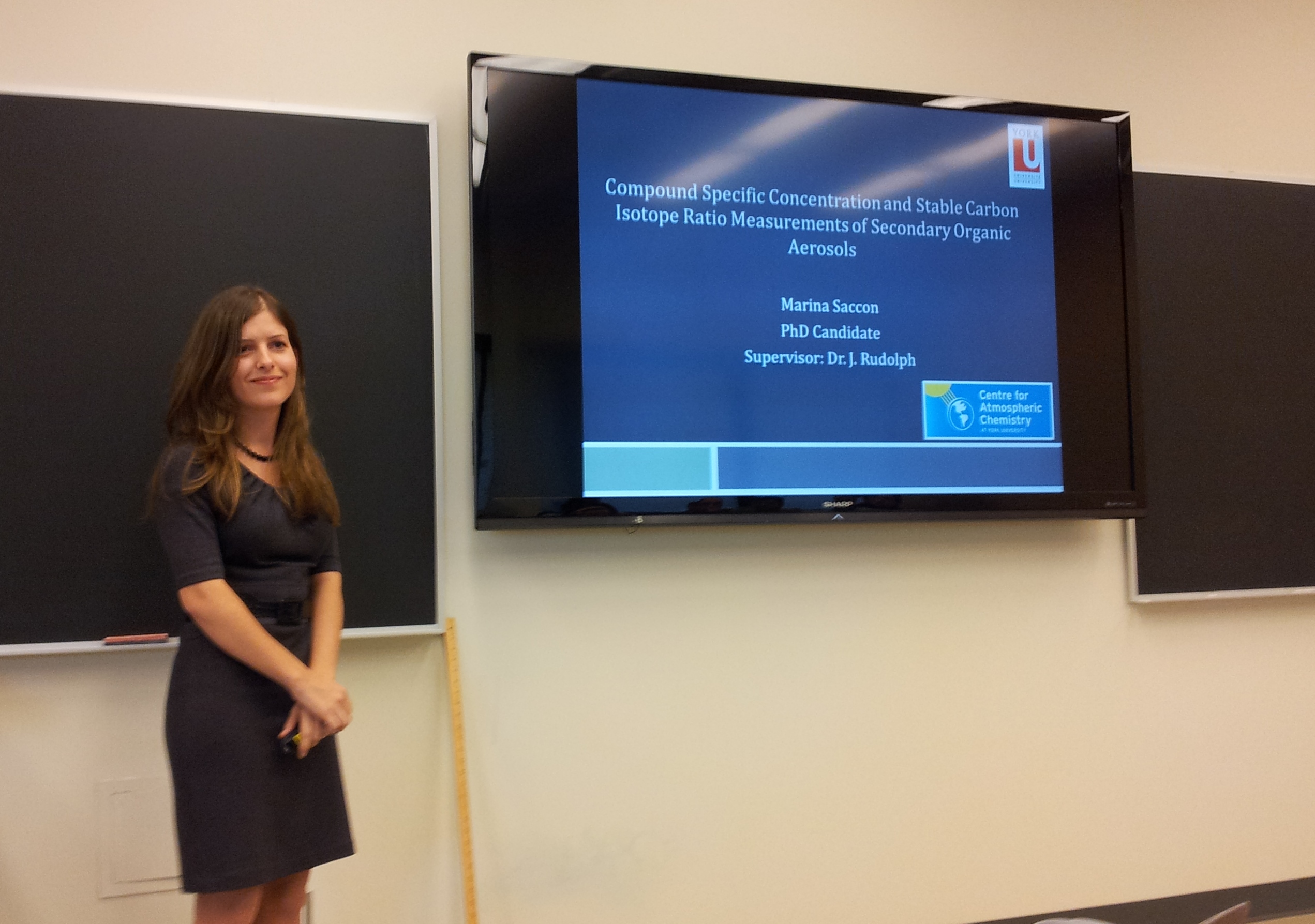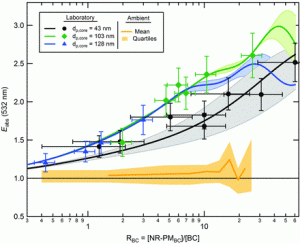Sarrafzadeh, M., Wildt, J., Pullinen, I., Springer, M., Kleist, E., Tillmann, R., Schmitt, S. H., Wu, C., Mentel, T. F., Zhao, D., Hastie, D. R., and Kiendler-Scharr
Published September 2016 in Atmos. Chem. Phys., 16, 11237-11248, doi:10.5194/acp-16-11237-2016.
Abstract. In this study, the NOx dependence of secondary organic aerosol (SOA) formation from photooxidation of the biogenic volatile organic compound (BVOC) β-pinene was comprehensively investigated in the Jülich Plant Atmosphere Chamber. Consistent with the results of previous NOx studies we found increases of SOA yields with increasing [NOx] at low-NOx conditions ([NOx]0 < 30 ppb, [BVOC]0 ∕ [NOx]0 > 10 ppbC ppb−1). Furthermore, increasing [NOx] at high-NOx conditions ([NOx]0 > 30 ppb, [BVOC]0 ∕ [NOx]0 ∼ 10 to ∼ 2.6 ppbC ppb−1) suppressed the SOA yield. The increase of SOA yield at low-NOx conditions was attributed to an increase of OH concentration, most probably by OH recycling in NO + HO2 → NO2 + OH reaction. Separate measurements without NOx addition but with different OH primary production rates confirmed the OH dependence of SOA yields. After removing the effect of OH concentration on SOA mass growth by keeping the OH concentration constant, SOA yields only decreased with increasing [NOx]. Measuring the NOx dependence of SOA yields at lower [NO] ∕ [NO2] ratio showed less pronounced increase in both OH concentration and SOA yield. This result was consistent with our assumption of OH recycling by NO and to SOA yields being dependent on OH concentrations. Our results furthermore indicated that NOx dependencies vary for different NOx compositions. A substantial fraction of the NOx-induced decrease of SOA yields at high-NOx conditions was caused by NOx-induced suppression of new particle formation (NPF), which subsequently limits the particle surface where low volatiles condense. This was shown by probing the NOx dependence of SOA formation in the presence of seed particles. After eliminating the effect of NOx-induced suppression of NPF and NOx-induced changes of OH concentrations, the remaining effect of NOx on the SOA yield from β-pinene photooxidation was moderate. Compared to β-pinene, the SOA formation from α-pinene photooxidation was only suppressed by increasing NOx. However, basic mechanisms of the NOx impacts were the same as that of β-pinene.


